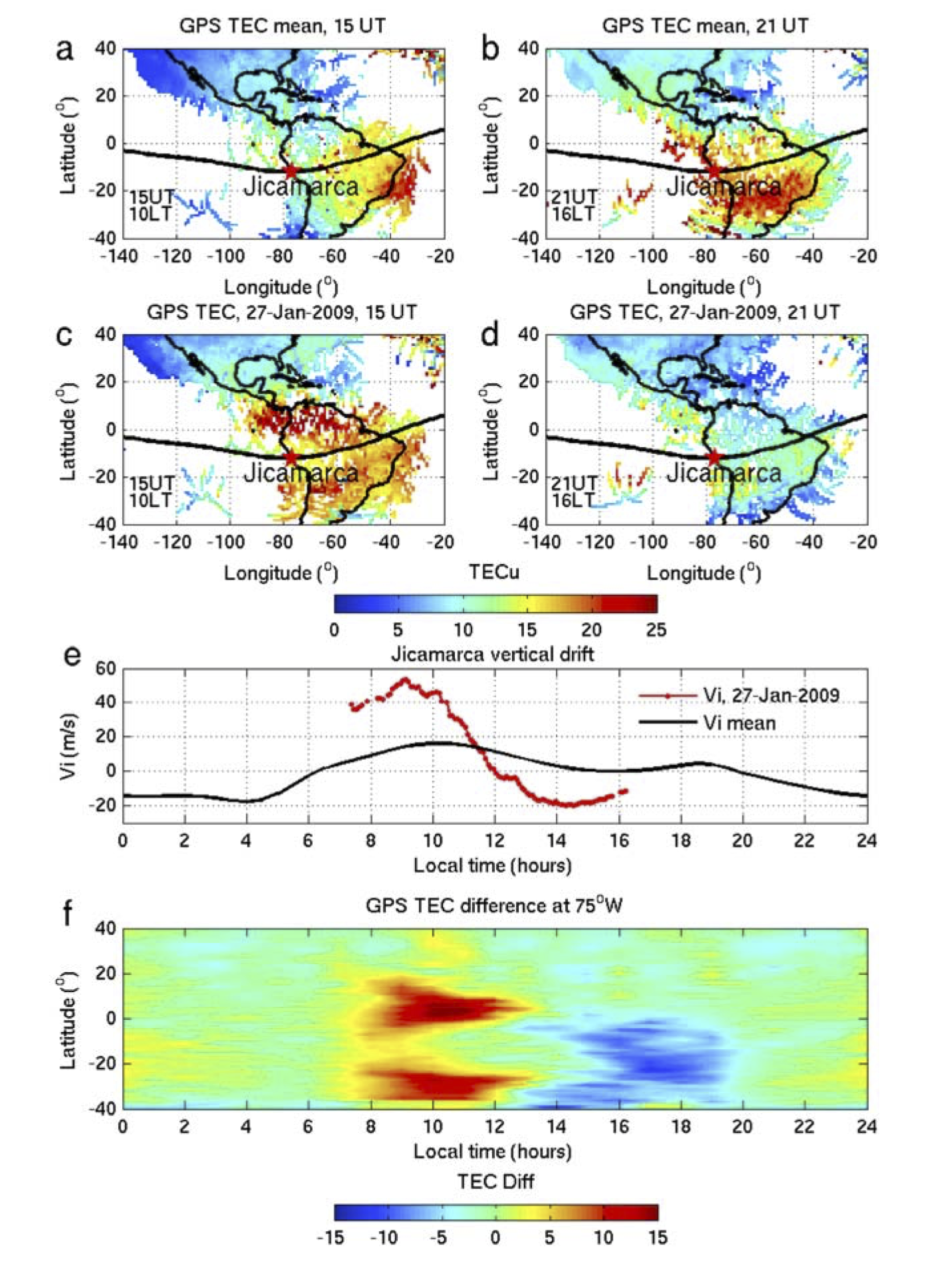Publication Name: Review of Geophysics; First HAO Author: Nick Pedatella; Authors: M. Baldwin, B. Ayarzaguena, T. Birner, N. Butchart, A. Butler, A. Charlton-Perez, D. Domeisen, C. Garfinkel, H. Garny, et al.
Sudden stratospheric warmings (SSWs) are impressive fluid dynamical events in which large and rapid temperature increases in the winter polar stratosphere (∼10–50km) are associated with a complete reversal of the climatological wintertime westerly winds. SSWs are fundamentally caused by the breaking of planetary-scale waves that propagate upwards from the troposphere. During an SSW, the polar vortex breaks down, accompanied by rapid warming of the polar air column.

Observations of ionospheric behavior during the 2009 SSW event. (a) Mean total electron content (TEC) at 15 UT (morning sector, 10LT at 75). (b) Same as Figure 10a, except for at 21 UT (afternoon sector, 16 LT at 75). (c) TEC in the morning sector (15 UT) on Jan- uary 27, 2009, during the SSW. (d) TEC in the afternoon sector (21 UT) on January 27, 2009. (e) Vertical drift observations by the Jicamarca incoherent scatter radar (12, 75) at 200-500 km altitude. The red line indicates observations on January 27, 2009, and the black line indicates the average behavior for winter and low solar activity. (f) Change in TEC at 75during the SSW as a function of local time and latitude. From Goncharenko, Chau, et al. (2010).
This rapid warming and descent of the polar air column affects tropospheric weather, shifting jet streams, storm tracks, and the Northern Annular Mode (NAM), including increased frequency of cold air outbreaks over North America and Eurasia. SSWs affect the whole atmosphere above the stratosphere producing widespread effects on atmospheric chemistry, temperatures, winds, neutral (non-ionized) particle and electron densities, and electric fields. These effects span the surface to the thermosphere and across both hemispheres. Given their crucial role in the whole atmosphere, SSWs are also seen as a key process to analyze in climate change studies and subseasonal to seasonal predictions. This work reviews the current knowledge on the most important aspects related to SSWs from the historical background to involved dynamical processes, modelling, chemistry and impact on other atmospheric layers.